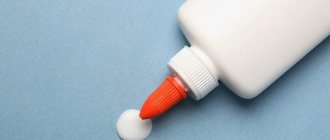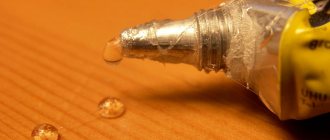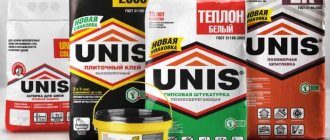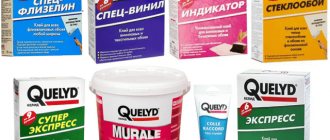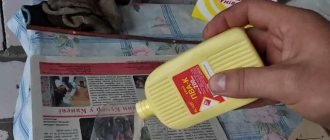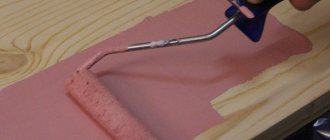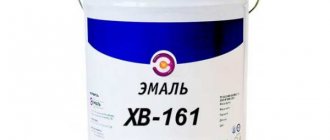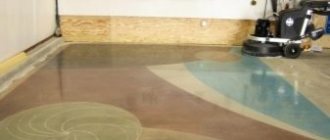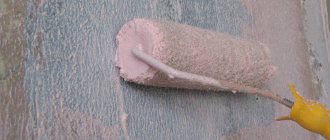Latex glue is a water-based mixture. It can also be called dispersive. Their use is widely known thanks to their use in the leather and footwear industry. They can be used for materials such as:
- leather;
- polymer clay;
- linoleum;
- ceramic tile;
- light polymer, cellulose and fabric elements.
latex glue
For metals, most water-based mixtures are not used. This is due to the fact that chlorine is released from polymers, which causes corrosion, and the metal will not have the desired bond strength. Although it cannot be said that glue on latex components is added to the cement mortar for elasticity and enhanced effect. The fact is that latex has good adhesion. In industry, to improve the quality of the mixture when working with metals, zinc and magnesium oxides are added to it.
latex glue
Description of the substance
Before moving on to the description of a specific composition, it should be said that any adhesive substance has such a feature as adhesion. In other words, this is the quality of the stickiness of a substance on a material. This parameter depends on the temperature of both the glue and the surface with which it comes into contact. Pressure, viscosity and wettability also play an important role.
Latex glue is a mixture of an aqueous solution of natural rubber with the addition of ammonia. Some of the solutions may additionally contain substances such as resins of synthetic origin, alcohols, ethers, as well as some other additives of inorganic origin. This variety of composition has led to the fact that one type of latex glue is well suited for working with polymer clay or plastic, for example, and another for working with wood.
What materials is it used for?
Latex glue can be used on many materials. Most often, a water-based mixture is used in the manufacture of shoes or for repairs.
It is recommended to use glue for the following types of materials:
- clay (polymer);
- leather (natural or artificial);
- floor coverings (carpet, linoleum);
- ceramics (dishes, finishing tiles);
- polymer or fabric materials.
See also Purpose and technical characteristics of Macroflex adhesive foam, rules of application
When joining parts made of polymer clay, it is recommended to use glue made from natural rubber. For leather products, a substance based on an artificial active element is more suitable.
Types of glue
Today there are two types of glue with a latex base. The first group includes natural latex, and the second group includes synthetic latex.
The general structure of latex glue, which is based on a natural substance, is as follows: 30-40% rubber, 1-2% protein, 1-3% resins and other additives.
The main application of this composition is wet duplication of materials. In other words, after applying the adhesive to one of the surfaces to be bonded, it must be immediately brought into contact with the second surface. In order to remove the liquid present in the composition, it is necessary that at least one of the substrates have a porous structure.
It can also be added that latex glue with natural additives can be used to create a pressure sensitive composition. In this case, the process looks like this. The composition is applied to one of the surfaces, it is dried, after which both surfaces must be connected to each other under pressure.
Characteristics of the composition with natural latex
It is worth noting that when using a natural latex additive for glue, it is possible to obtain a film that will have good cohesive strength, but at the same time it will have low adhesive characteristics. In order to improve the adhesive component of the solution, adhesive substances, for example, phenol-formaldehyde resins, are usually added to it.
In order to obtain an adhesive base that is pressure sensitive, it is necessary to mix natural and synthetic latex. However, here you need to take into account that the viscosity of the composition will be much higher than individually, and therefore a stabilizer is needed. For latex glue of this type, the stabilizer can be, for example, casein, potassium or ammonium oleates.
In addition, if you mix natural latex and chloroprene rubber or polystyrene latex, you can get adhesive tape. The best mixture option would be a ratio of natural to synthetic substances from 95:5 to 50:50.
Other types of glue
Today, latex-based glue is mixed with a huge number of other substances. For example, if you add carboxylic acid-containing rubber to natural latex, you will get the same glue that is pressure sensitive, but you will not have to use stabilizers, its structure will be quite sticky.
Carboxylic acid-containing rubber, for example, styrene butadiene rubber, is excellent for creating a composition with maximum adhesion. To obtain this composition it is usually necessary to use fumaric or acrylic acids. The second one is best suited, and therefore latex-acrylic glue is quite common.
Effect of rubber
It is worth paying attention to other parameters that the rubber-based composition has. For example, the shelf life can range from 3 to 12 months, depending on the nature of the rubber. There is such a characteristic as hardening. Glue on this basis can harden both at room temperature and at elevated temperatures. If the temperature is room temperature, the time until complete hardening is 24 hours. In general, it is worth noting that the operating temperature range varies greatly depending on the nature of the rubber. For example, natural can be used in the range from -50 to +100 degrees Celsius, chloroprene from -50 to +70, PVA in the range from -5 to + 100.
Naturally, this solution also has a certain strength limit. This parameter depends on what kind of latex is used in the composition, as well as on what kind of vulcanizing system is used. You can give an example of rubber gluing using such a composition. In this case, the strength of the connection will be higher than the original strength of the rubber itself.
Comments 46
reply to comment by Lech 1984
Hello. Tell me in what proportion should rubber glue grade A (in 50 ml tubes “NOVBYTHIM”) be diluted with “Galosha” gasoline (nefras-s2) to obtain the optimal composition of the glue. Is the stickiness lost when diluted?
reply to comment by Lech 1984
Hello. Tell me in what proportion should rubber glue grade A (in 50 ml tubes “NOVBYTHIM”) be diluted with “Galosha” gasoline (nefras-s2) to obtain the optimal composition of the glue. Is the stickiness lost when diluted?
reply to comment by Lech 1984
Hello. Tell me in what proportion should rubber glue grade A (in 50 ml tubes “NOVBYTHIM”) be diluted with “Galosha” gasoline (nefras-s2) to obtain the optimal composition of the glue. Is the stickiness lost when diluted?
reply to comment by Lech 1984
Hello. Tell me in what proportion should rubber glue grade A (in 50 ml tubes “NOVBYTHIM”) be diluted with “Galosha” gasoline (nefras-s2) to obtain the optimal composition of the glue. Is the stickiness lost when diluted?
reply to comment by Lech 1984
Hello. Tell me in what proportion should rubber glue grade A (in 50 ml tubes “NOVBYTHIM”) be diluted with “Galosha” gasoline (nefras-s2) to obtain the optimal composition of the glue. Is the stickiness lost when diluted? __________________________
Reply to ViktorL's
It's useless! Nothing will definitely stick to my base.
